The Hard Truth About Costs Associated with an AR
You can build your own AR! You could probably also buy a better AR with included liability protection (in the form of headspacing and specification pairing) and a brand name cohesive look for less than the build price.
Sure, price isn’t always everything, but it matters, especially when you can get factory integrated high end rifles with desirable third party accessories or brand collaborations, and it costs less than the parts total for your buildout.
Is it always the truth that factory builds are cheaper or offer more bang for the buck? No. In fact, for large swaths of time in the past 15 years there were periods where builders enjoyed a parts glut on the market and the manufacturers were more expensive for the same thing as what you could build for a couple hours (or less) of assembly time.
Right now, it’s pretty close to even, with a slight advantage on the low end side of the market for the factories over a parts build.
The brand names with lower volumes, loyal fan bases, or particularly good marketing can and do charge a premium. But most assemblers of parts kits won’t be able to build a rifle as seamless and well finished or matched as these higher end manufacturers, and if they can, they may only save a couple hundred dollars, in exchange for several hours of their time.
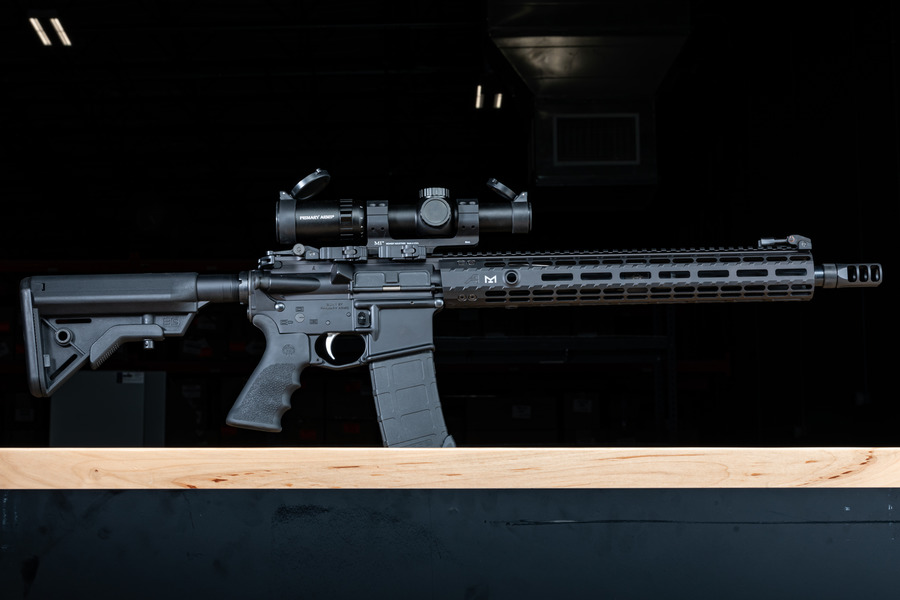
Smart manufacturers and those that have some control over their budgets or some maturity in their supply chain can leverage huge benefits as needed to manipulate the profitability and the risk associated with the cost of revenue in their business models.
Here’s how big manufacturers do this:
- Economies of scale – they buy parts for 20,000 guns at a time, not 1 or 2
- Pricing controls – they negotiate favorable contracts that minimize shipping costs, improve baseline materials, or offer some select benefit because they are buying in volume or with regularity
- Lower risk than the companies that perform contract work for them – they only have the risk of the latest batch, not the machine payments or the material supply disruptions, etc.
- Integrated marketing and branding teams that smaller manufacturers must farm out to afford on a recurring basis, or benefits from long standing branding and name recognition, which leads to padded/insulated sales cycles
- Huge Capital Expenditures that have long since been paid off and now can be used across multiple lines or as part of strategic collaborations to lower total costs of goods sold
- Low cost of capital – your rifle cost you 16.9% on the credit card – their credit lines cost them 2.45% APR and get bundled favorably into the next credit obligation
- MAP and MSRP and other cost controls that help protect distributors and dealers don’t negatively affect the manufacturer’s bottom line, and usually improve them
- They get free marketing from affiliates, collaborators, and other partners because everyone wants to be associated with a big name for exposure, when the end user consumer is likely only to remember the big brand manufacturer the next time they purchase
All these things contribute to the benefit of the brands you might be considering buying a whole rifle from. And let’s be honest, a lot of people think they can easily put together an AR lower receiver and upper receiver because it’s modular and their cousin did it once, but to make a premium product out of a bunch of parts still takes more than a heartbeat and a dead blow hammer.
How Can a Factory Beat Me If My Labor Is Free?
There is not a point in arguing semantics. If you say your time is free because you would be tinkering on a gun anyway, then it’s free. No argument here. The truth is that, as mentioned above in line items, the factory gets cost savings from a lot of different avenues.
They can almost always beat you on price, regarding labor, parts, machinery time, whatever it may be, even if it’s only based on the fact that they use economies of scale.
Everything a manufacturer does is based on massive economies of scale. Here’s just a single example: There is a term in the CNC and manual machine shop world called a “job shop”. Job shops may be a company in the middle of nowhere that has a couple CNC machines and 12 employees, but they only have enough work in their core line of business to do one or two shifts.
When they contract with Sig Sauer, or Daniel Defense, or some other manufacturer to machine parts to specification, they do so to pay their bills, like machine payments and payroll. Sometimes job shops don’t even make money on all their contracts.
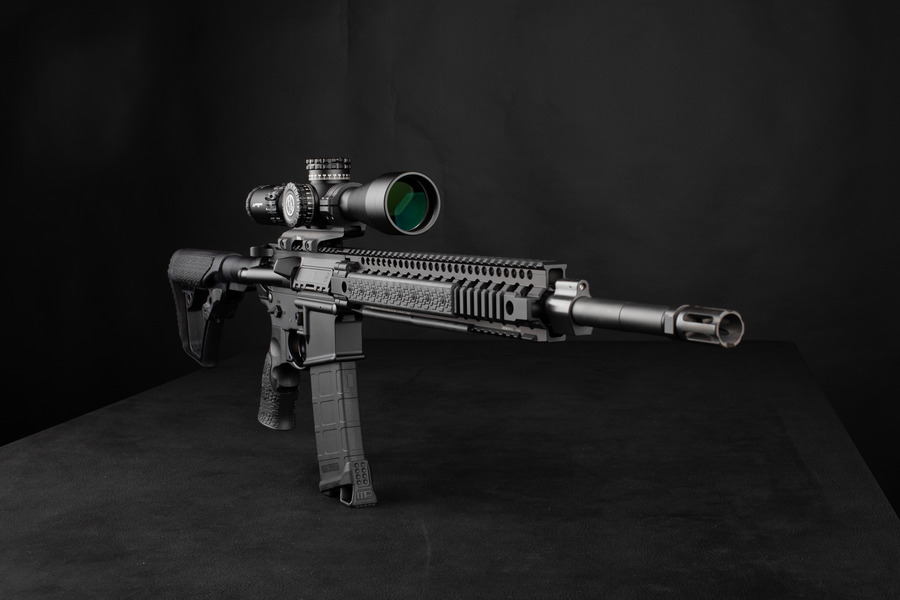
Seems counter-intuitive, but a job shop might actually lose significant money on an ongoing operation, so that they are in the pipeline for other jobs from other brands. Say Sig Sauer asks Joe Blow’s Job Shop in Jupiter, Florida to make bolts and carriers for $19.
They cost $12 in materials and labor and machine costs to mill and key slot. Then they send them to job shop #2 to get heat treated and then oxide treated, so they match the factory color and specifications.
Job Shop #2 charges Joe Blow’s Job Shop $8 to do the finish work and bring the bolts and carriers to specification, then ships them on to Sig. That’s $20 that Joe Blow’s Job Shop is into the bolt for, and Sig gets them delivered for $19, all-in.
But then Joe Blow can pay his payment on his machines with the extra cash flow. He can continue to employ those 12 employees. He can keep the lights on. Joe Blow – the proprietor of Joe Blow’s Job Shop can now approach another manufacturer and pitch them on bolts and carriers for $24 all in.
And because he is able to add additional volume to Job Shop #2’s workflow that is already profitable for them, they can get the total cost down to $6.25 for bolt/carrier. Now, not only is Joe Blow making $5.75 profit on selling to the second manufacturer, but he is making 75 cents from Sig per combo too (where he was losing money temporarily before). Joe Blow rinses and repeats.
Sig doesn’t care, because they have favorable terms on the money they spend on the parts; favorable terms extended by Joe Blow, and they don’t pay anything for freight. The ever-extending credit lines keep the manufacturer operating at a profit.
All that, and they don’t have to spend on CapEx to build out more factory floor space unless they want to. They can ramp up production when they find good partners, and the manufacturer (Sig in this hypothetical case) risks nothing in a market downturn, except the latest parts order.
Making The Case for Buying A Factory AR
It’s a hard sell to a lot of AR people to tell them they might be better off going for a factory complete and proven solution, instead of building on their own. But there are a lot of reasons to consider it.
- Right now, even after the parts supply has begun to return to a little bit better than during late 2019 and all of 2020 and part of 2021, it’s still hard to find certain parts. Factories get first dibs because they have long standing contracts with component parts makers
- The guns are tuned from factory, built to an exacting spec that has teams of people using standardized processes and a legitimate QC/QA process
- They must be held to a higher standard of care regarding liability, than a home builder – that means that they are headspacing properly, have qualified oversight, torque barrels to a certain amount of pressure and back their product. With a home build, if you mess something up you either must repair it, replace it, or shoot it with some risk or annoyance
- They generally look cohesive, are balanced, and provide reliability that doesn’t have to constantly be dialed in because of the component mix
- The finish is almost always flawless and matches by color, finish texture and durability
- You can get newer releases to access new innovations in the market that may not be ready for the mainstream because they were developed with a collaboration partner or as part of a special R&D project
- Some makers of premium full build rifles ARE the manufacturer of the component mix that satisfies a large portion of your desired components – go get that discount and save your labor
- Easy warranty work or customer servicing compared to trying to collect on 20 different manufacturer’s policies, some of which may go out of business when you need them because they couldn’t maintain a commercially viable operation
- Simplicity, mainstream availability, possible discounts or price reductions for return customers or new buyers
- Promotions
Making The Case for Building Your Own AR
For those that are hardcore into the tinkering and building something that caters exactly to their idea of what they need, it’s almost impossible to convince them to buy a factory complete solution. Here are some reasons that point to the concept of building over buying an AR solution:
- No maker builds what you want to shoot
- You have exacting standards and need a specification that is not adhered to at the factory, but you have the means or tooling and know-how to accomplish the elevated standard
- You already have components you have been saving for a build, and don’t want to increase your costs to get a rifle to completion
- You really enjoy tinkering and have done this before
- You have access to some secret stash of components that are desirable, but not generally available on the market
- You’re ready to build the ONE GUN, and you have a well laid out plan and the means to achieve your desired result
- You want to machine your own lower, upper or some core component part and make it a unique piece for your private collection
- You cannot find good value currently on the fully-factory-built AR market
- You don’t mind timelines, you just want what you want, and it’s not available yet from the factory
Making The Case for Assembling an Upper Half and A Lower Half of An AR
A complete upper is the obvious choice for someone who has the lower already configured the way they like it and having spent a significant amount of money on that lower setup.
Some upper kits are direct plug-and-play options, where the magazine well is already big enough on the AR15 to accommodate the cartridge, you want to shoot out of the gun after you put the upper on it. An example would be 6.9SPC or .300BLK, or something else that is a smaller overall case length.
If this is what you want to do, the upper receiver assembly route could be the best bang for your buck because they are proven reliable, generally; offer better value, and are more available sometimes than all the component parts you may desire.
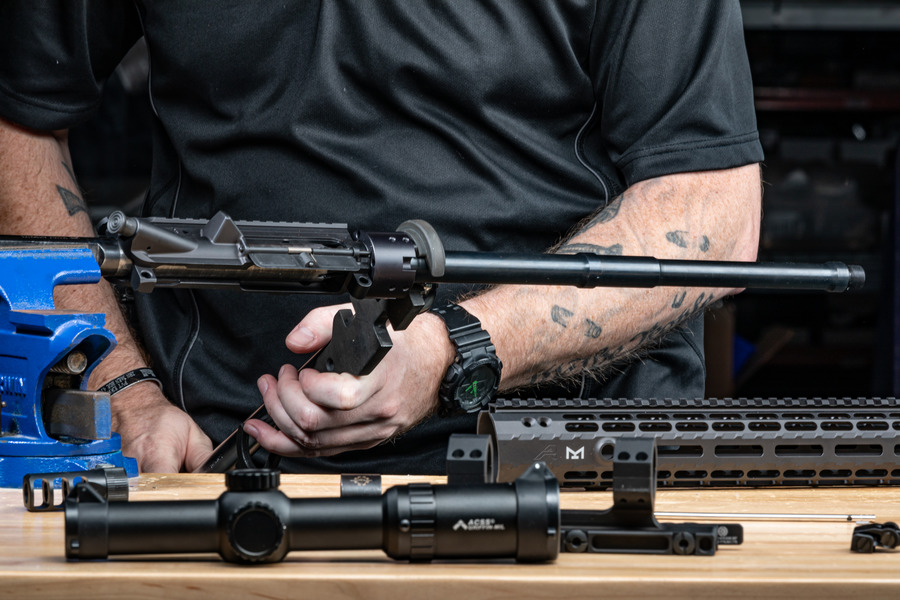
If you want a monolithic matching set, this is also another good reason to get an upper and a lower – though you’ll probably be building from that point on, since most monolithic receivers are paired already and made specifically for barebones builds and mated as a brand pair.
If you are ready now, and don’t want to wait – there are a lot of upper receiver assemblies on the market at good price points, and this is a no-brainer.
If you want to be sold on this concept, look no further than the (hundreds of thousands to) millions of drop-in conversions and top ends that have been purchased in the past year.
Right now, is a good time to buy a complete upper as the components market is still stuck in supply chain purgatory and has yet to return with any sustainability after a rough couple of years, but the availability of fully assembled factory offerings of uppers is pretty decent.
Things You May Not Be Thinking About When You Are Grabbing an Upper and A Lower Sight-Unseen, And Assembling Them Together to Form You Hybrid Firearm
- Not all finishes are created equally. Even if they are both premium finishes, the colors in anodizing and oxide treating of aluminum and steel (respectively) vary by batch, so it may not even be a lesser quality job, just that it’s done at a different time, with a different amount of time in the chemical batch, and with slightly different solution mixture ratios
- Specs can be off by a few thousandths of an inch, and when paired together, look like a nightmare – like a gap between the two halves of a receiver
- Make sure you know which platform you need to be using for your desired upper or lower. If you own a AR-10/.308 AR platform upper or lower, it will need to be paired with one of the same style. This might include adding an upper to shoot 6.5 Creedmoor, which requires a .308 lower setup
- You may need to change the bolt and carrier (if you buy a fully assembled kit for the upper you won’t have to worry about this)
- You will still need to do basic safety inspections and checks like headspace gauging and gas system work
What You Should Be Aware of From a Safety Perspective
If you decide to build rather than to buy, make sure you are using component parts that meet the minimum necessary specifications. Here are some obvious ones:
- Check headspacing
- Make sure if you plan to shoot 5.56, you’re using a 5.56 capable barrel configuration which could be a .223 Wylde or a stamped 5.56 capable barrel
- If you’re shooting a .223 Remington out of a 5.56 barrel, you won’t generally have any safety issues, but you may be losing significant accuracy
- If you plan to shoot longer bullets, make sure you have an adequate chambering and appropriate inner dimensions on the freebore and leade
- Gas system adjustments need to be dialed in – read about those systems if you are mating uppers to lowers and make sure you test with the right conditions for reliability and safety
- Check for damage to the direct impingement system components during shipping – a bent gas tube can cause a problem and they are not particularly robust when uncovered and can bend easily
- Check for free movement on bolt and carrier and for proper seating into the breech face for all necessary components
- Also check the barrel for machining debris and to ensure it is free from obstruction
- Remove excess oil or grease, especially on the upper receiver components and inside the muzzle brake, etc.
- Consider doing a full clean and lubricating lightly before you shoot the firearm and after your safety checks
Do a final basic safety check prior to shooting – and this is a good idea prior to shooting at all, any time.
- You can check for barrel obstructions or rings, squibs, or gouges in the barrel – a barrel with an anomaly is not safe to shoot – have it checked out by a professional if you notice a bulge, ring or major inclusion like a deep pit
- Check for a loose muzzle device and tighten to torque specs – look for telltale signs of improper harmonics, like bullet tumbling or awkward sounds at projectile exit from the muzzle
- Make sure you are not introducing too much lubrication into the firearm, especially in line with the bore
- Check for adequate magazine spring tension and for a fully functional buffer tube assembly or a properly adjusted gas system
- Make sure you do not have a loose barrel nut or handguards/tube that is not tightened or has excess movement
- Check the bolt face for any deterioration and the extractor and breech lockup for hard debris, including impacted unburnt powder residue or pieces of brass or copper or built-up lead
- Look for signs of bullet shaving, which may indicate an improper lockup at the breech or poor-quality ammunition or a bad fitment on the upper and lower groups
Who’s A Good Candidate for A Factory AR?
Do you like a specific look, the specifications on a brand’s specific model, or you want to own something with that name brand on it? Buy factory. You won’t be disappointed.
Have you been coveting a very rare model that is hard or expensive to build anyway, and you have a chance to pay at or near retail price for the factory version? Buy Factory. You won’t be disappointed
Do you need to guarantee safety, liability, accuracy/precision, and cannot do that confidently with your given tools and skillsets? Buy Factory. You won’t be disappointed.
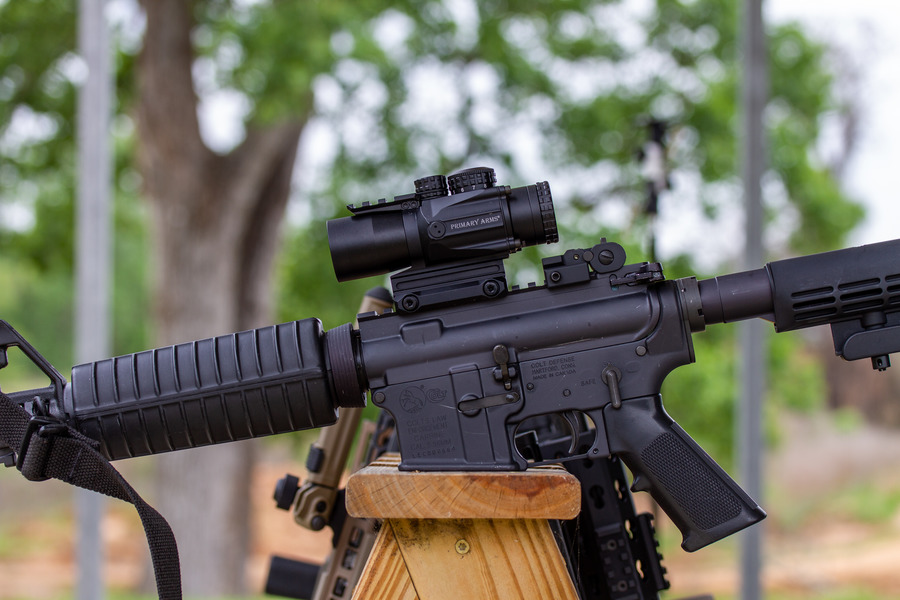
Do you live in a state that has very restrictive gun laws surrounding AR’s? Buy factory to ensure that you have compliance. You will be disappointed, but you won’t be an edge case suitable for a long protracted fight with the ATF and DOJ.
Do you have tools, knowhow, understanding of how to check headspace, and tune gas systems, a good vise, and a few hours of time on your hands? Don’t buy factory. You’ll ultimately be disappointed. At least don’t always buy factory, that is.
Have you already tinkered with your factory AR’s and feel very confident that you can get swept away in the spending spree and logistic nightmare that usually comes with a fantasy build? You are not a good candidate for a factory build, unless it’s something that is highly coveted like a HK 416 or something like that. In that case, buy factory and build. You like what you like.
In Conclusion
This article isn’t meant to tell you that you must fall in line with our recommendations – it’s years of experience that leads to knowing where customers see regret in their decisions because they were uninformed on when it makes sense to favor one option over the other.
In the case of building an AR – it’s fun, a good learning experience and can be helpful in understanding your own preferences, but it can also be a money pit. And when you buy, you will rarely regret getting a solid offering out of the box without any rigging, or testing, or tooling.
And there is always a 2nd, 3rd or fourth AR to build, so you can always experiment later if you want to play it safe the first time.





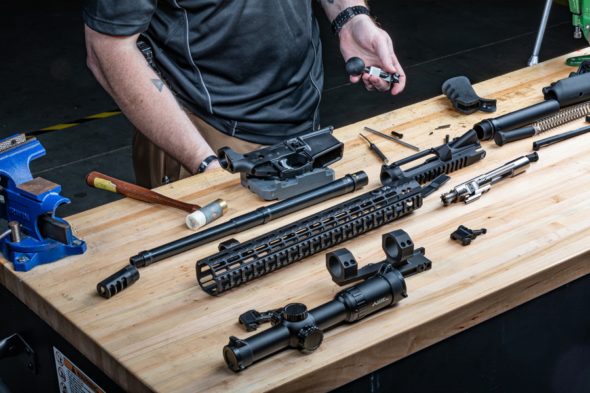



If you buy a brand-name AR you can expect to pay brand-name mark-up on pieces parts that don’t necessarily matter, like the dust cover. By D-I-Y-ing you can focus the money on where there’s the most ROI, like the BCG.
Also, all finished firearms have an 11% federal excise tax applied at the wholesale level (so it doesn’t show up on the sales slip) but pieces parts do not. Which can save the D-I-Y-er some Ka-Ching.
But not always. Street prices on ARs have fluctuated violently in the last few years and sometimes were selling so cheap that you couldn’t buy the constituent parts to build your own from even the bottom-feeding parts companies for that little. Not that long ago, when there was a glut of ARs, I saw one advertised online with an 10″ bbl but with a 6″ suppressor pinned and silver soldered as a permanent muzzle device. The suppressor skirted the SBR designation but it still was an NFA, but you only needed the one stamp. The thing was, the asking price was only $600.
$600 is center mass for a low-end centerfire suppressor so in this case they as much were selling you a suppressor and giving you the attached AR at no extra charge.
So if you’re D-I-Y-ing to economize, you should do some market research because if history repeats itself you might find you can buy factory-built cheaper than you can buy the D-I-Y parts.
I paid well over $600 for my first AR15, a DPMS from Walmart (when they still sold them) with my first Social Security check. That was in 2013.
Then I got smart and started building my own from both Polymer and Aluminum 80% lowers. Now I only use Aluminum lowers and with all the parts needed to complete a rifle with no sights or optics, about $400 each.
The most expensive one I built was an AR10 Polymer 80% lower and with the P-308 scope it was about $800. Started from a PSA PA-10 rifle kit, no lower receiver. (BTW, Out of Stock now) Try to find one now for that cost.
Sometimes what you want ain’t on the shelf, and can’t be ordered online.
Plenty of really fantastic components out there, and it’s not about glomming stuff onto your AR. Operating systems barrel lengths / twists, coatings, etc., can be had, but not always in the same pile.
Plus, building AR’s (and probably can replace AR with your favorite firearm) is a ton of fun all on its own.
I think the authors here are comparing apples to oranges. If I want an AR-15, can I get one fully assembled for less money than I can put one together myself? Yes, as long as I’m ready to buy an assembled one that is bare bones, plane jane and not to my specs.
Every AR I own (including my National Match rifle and my AR-308) I’ve assembled myself and if I’d bought comparable guns with comparable specs fully assembled, I’d have paid much more for them (in the case of my match rifle, close to twice as much).
If you aren’t picky about exactly what style of sights you have, or the type of handguard or the style of buttstock, and if you want a gun right now…then by all means buy one off the shelf.
If you have some time and/or want something specific, take your time; watch for sales, buy the pieces you need when you can get them at a discount. As long as the parts are within spec and the bolt headspaces correctly with the chamber, the gun will most likely be more accurate than you are. All of my AR style rifles shoot near MOA accuracy. With the right ammo (I handload), my match rifle makes .4 MOA groups from a rest (unfortunately, I can’t shoot from a rest in matches so you’d never know it from my scores…but it’s not the rifle’s fault).
Yes, you may end up having finishes that are a little mismatched (how many shades of black are there anyway?) so if that’s important to you, mix and match may not be the way to go, but if your primary goal is to build a well functioning, custom rifle for as little as possible…I’ve found that the “buy the parts when you find them cheap” method is the way to go. Patience and checking prices regularly is the key.
There are also two more factors that go beyond costs: One is the satisfaction of doing something like that yourself. The fact is, assembling an AR-15 from parts is not rocket science; you don’t have to be a machinist or engineer to do it – just handy with some pretty basic tools; but assembling your own rifle to your exact specifications and then taking it to the range and successfully poking holes in paper or ringing steel with it is extremely satisfying.
The second is the fact that assembling your own rifle forces you to get into the inner workings of it. Put one together once and most of the mystery of how the parts all work together to make the rifle function becomes clear…which means in the event of a malfunction, you are much better equipped to diagnose the problem and resolve it quickly.
You should build your own AR pattern rifle if you:
(1) Have a history of understanding complex machines, at least as complex as a geared bicycle with derailleurs — and understanding how the derailleurs work, how the chain interacts with the cogs and chainrings and jockey wheels, how it is adjusted to shift properly, etc. Other kinds of complex mechanical endeavors would also qualify — auto mechanics (beyond changing oil/air filters or brake pads; actual engine tear-down and reassembly); motorcycle engine mechanics; suspension/shock absorber tear-down, maintenance/repair and reassembly also would qualify.
(2) Take the time to learn how the AR system works. Not just how the parts go together, but what each part DOES when the rifle is operating with live rounds. Understand the BCG’s operation and its sub-parts. Understand the gas system’s parts and how the whole system operates. Understand how barrel fit to upper receiver, and method of attaching barrel to upper, affects accuracy.
(3) Don’t listen to online blowhards that tell you it’s a LEGO set and you just need to snap the pieces together and if at the end of assembly it “goes bang!” you won. No. That’s not how an intelligent rifleman would go about it. That’s how a wannabe, mall ninja, keyboard warrior, or teenaged pretender at adult wisdom would do it.
(4) Take the time to learn from people who assemble precision-focused AR pattern rifles. They’re the ones who are optimizing the whole AR system. But take what they say & do with grains of salt, because a match-only/bench-rest-only rifle doesn’t have to be ready for all conditions and all levels of maintenance/dirtiness. Taken too literally, their advice/methods can become less useful the more you want an all-conditions readiness in your rifle. And remember a bench-rest AR pattern rifle can be as muzzle-heavy as you like, but if you intend to shoot it from any dynamic positions other than prone, it’s going to feel more like a sledgehammer held at the handle’s end, than a well balanced sabre or katana.